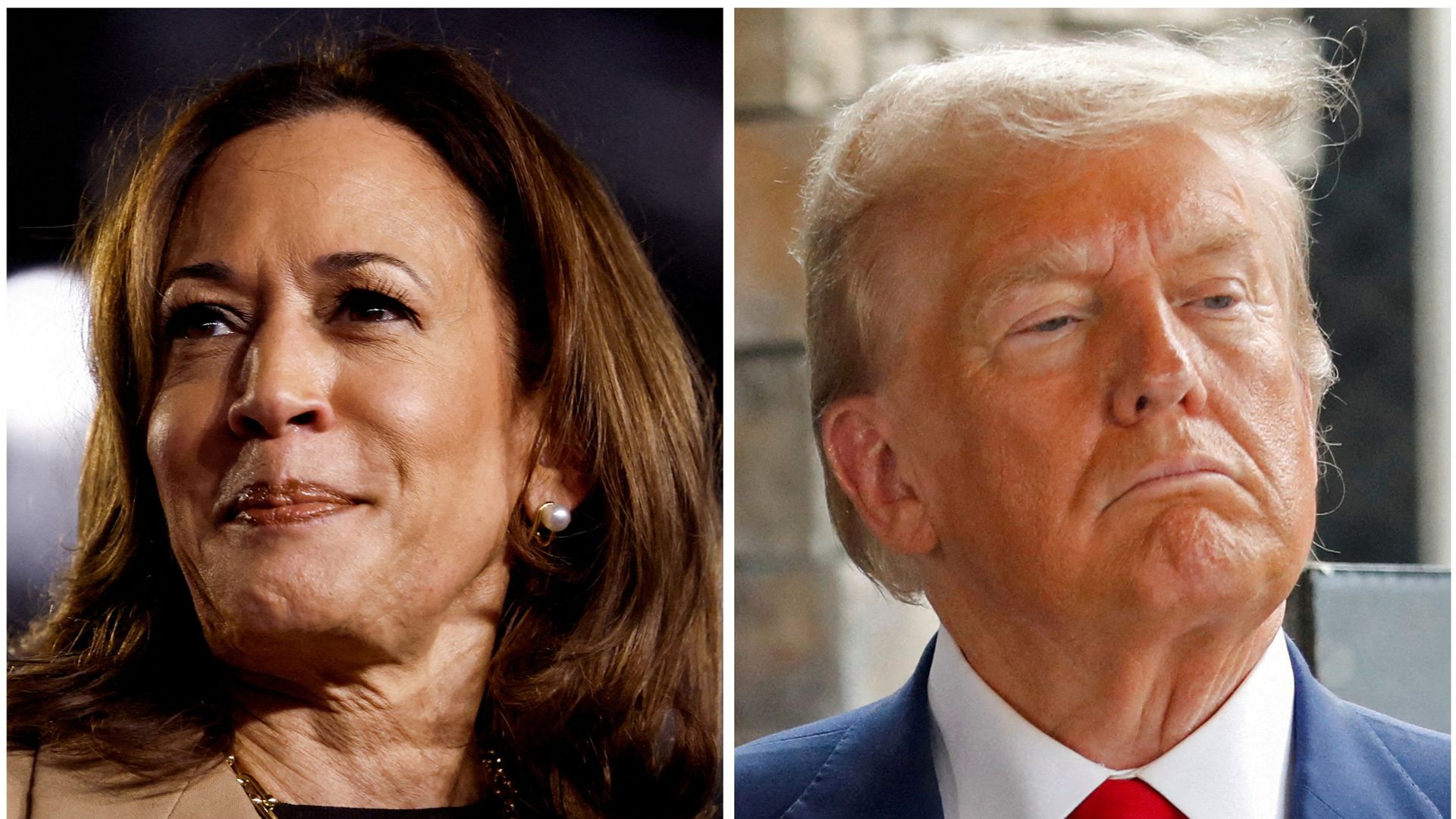The 'anachronistic' Electoral College system that decides who is the U.S. President

Democratic presidential nominee and U.S. Vice President Kamala Harris and Republican presidential nominee and former U.S. President Donald Trump. /Evelyn Hockstein & Octavio Jones/Reuters
The U.S. Presidential election is unusual in that it's decided by an Electoral College system rather than a simple popular vote.
In two of the past six polls a Democrat candidate has emerged victorious in the popular vote but lost out on the Presidency by virtue of not reaching the critical 270 Electoral College votes tallied from the 50 states that make up the country.
In 2000 Al Gore lost out to George W. Bush by 271 electoral votes to 266, despite winning almost 500,000 more votes nationwide. The discrepancy was even more pronounced in 2016 when Hillary Clinton lost out to Donald Trump by 304 to 227 in the college despite having received almost 2.7 million extra votes.
Political expert Professor David Dunn, from the UK's University of Birmingham, told CGTN the Electoral College system was "anachronistic" and "difficult to justify in rational terms."
He explained: "It was designed to favor the states set up back in 1787 and doesn't work so well now. It overly represents least populous states that tend to be more rural, more conservative, whiter in their demography."
Dunn continued: "By virtue of the fact that places like Montana and Nebraska and North and South Dakota have a disproportionate share of the Electoral College, their votes effectively count for more and they counteract the popular votes."
But is such a state of affairs unavoidable to some extent, and complaints merely a case of sour grapes from losing candidates?
"Some people say 'well, it's important that the smaller states have a say in the nation, why should they be discounted?' said Dunn. "But you have a situation whereby huge votes over the necessary majority in states like New York and in California and indeed in Texas and Florida are also discounted.
"So the value of a vote in one part of America is different to the value of a vote elsewhere. And that's an anachronism that's difficult to justify in rational terms."
The Electoral College will decide who is the next occupant of the White House. /Nathan Howard/Reuters
Dunn said the system had the "perverse" result of "massively favoring" voters who live in the seven swing states of Arizona, Georgia, Michigan, Nevada, North Carolina, Pennsylvania and Wisconsin
He argued that the system "often gets it wrong in terms of the result of the Electoral College being at odds with the general mood of the country and indeed the popular vote."
Some have argued that the U.S. should be changed to a simple popular vote format, like most countries which vote for a head of state. "Going back to 1787 that was a radical idea and no country in the world did that then," explained Dunn. "Now, many people elect their head of state or head of government directly through a popular vote."
The Republicans historically benefit from the Electoral College disparity, so have perhaps understandably been reluctant to change the American Constitution.
According to Dunn: "It's a very difficult process that requires supermajorities and then the ratification of two thirds of the states. So it's very difficult to change the Constitution in practice, even though a majority of Americans recognize that this is a very imperfect way of choosing your president."
WATCH: The concept of 'faithless electors' explained.
With the election believed to be on a knife edge, talk has turned to the possibility of the candidates tying with 269 votes apiece. That likelihood is increased by the possibility of so-called 'faithless electors' who attempt to vote for a candidate different from the ones to whom they were pledged.
The Electoral College is composed of electors who each cast one electoral vote following the election. Each state gets its number of electors based on its total number of representatives in Congress. Of the 50 states, the largest is California with 54 Electoral College votes. A handful of smaller states including Delaware and Vermont have just three votes.
At the 2016 election seven candidates unsuccessfully attempted to alter the election result by the faithless method.
Unless this method is used to end electoral deadlock, Dunn said that a tie-break scenario would likely lead to a Republican victory because the decision would be handed over to the U.S. Congress.
He said: "If it goes to Congress, each delegation from each of the 50 states gets one vote, so whoever gets 26 or more gets to choose who is the president. It's likely that the Republicans will take the Senate this time round and they may get the House.
"Whichever way it turns out, the Republicans are likely to be in the ascendant in such a situation, so they will get to choose among themselves who will be president – despite what the popular vote says."